Why can’t the objects we use every day be beautiful, unique and useful? This is the question that drives Karim Rashid, an industrial designer known for his affordable designs including the Oh Chair and the Garbo garbage can. Rashid shares stories about his early influences, adolescence and career in “The Prince of Plastic.” It’s an episode of Artifactuality, a podcast series that imagines a museum of the future made up entirely of the stories we tell each other.
Download and subscribe to Artifactuality: Stories From the Museum of the Future wherever you get your podcasts.
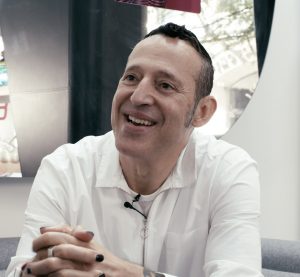
Karim Rashid
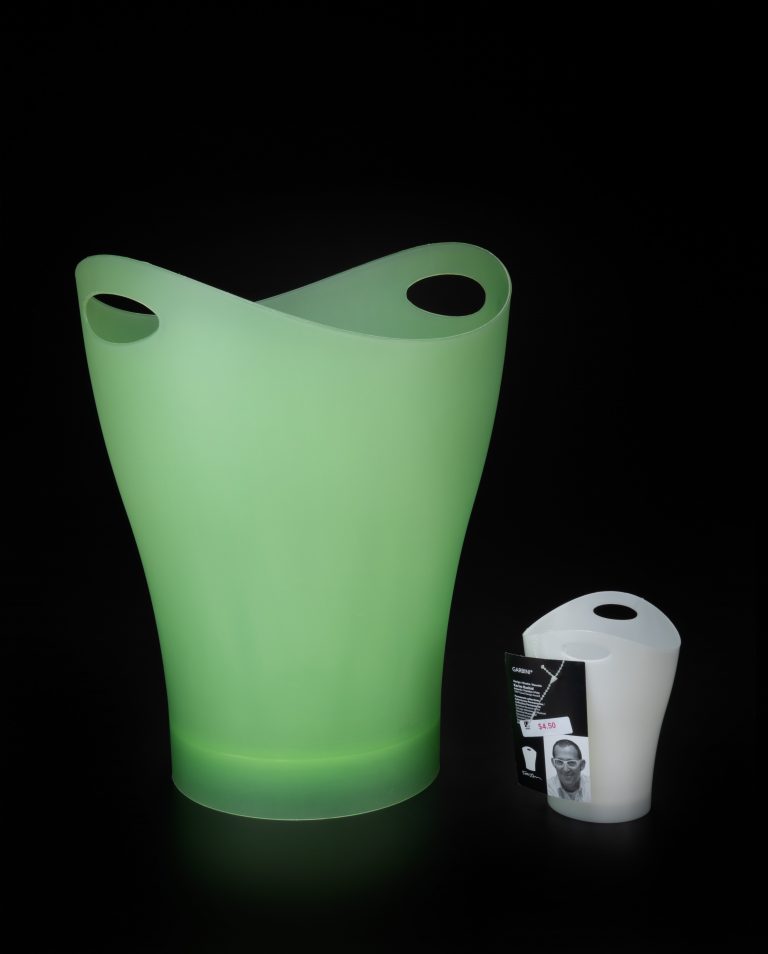
Garbo (green) and Garbini (white), Canadian Museum of History, 2018.308.122 and 2009.165.1
Why are there garbage cans in the Canadian Museum of History’s collection?
The Garbo and Garbini aren’t the only wastebaskets in the Canadian Museum of History’s collection, but they’re the only ones that are also in the collections of the MoMA in New York City and the Centre Pompidou in Paris. Although they are intended to be filled with garbage, the Garbo and Garbini exemplify Karim Rashid’s work because they’re colourful, functional and elegantly shaped sculptures with no rough edges. They’re also affordable and widely accessible, making them examples of “democratic design”.
Rashid has worked across many industries and disciplines, creating art pieces and products for luxury brands such as Veuve Clicquot and Alessi, as well as “democratic” products such as the Garbo and the Q-Chaise for the Canadian company, Umbra. In 2019, Rashid sat down with Canadian Museum of History curator Laura Sanchini and explained how his childhood influenced his design philosophy.
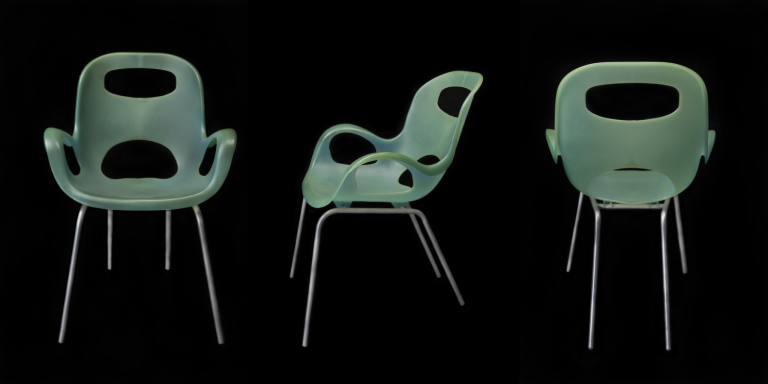
Armchair, Canadian Museum of History, 2018.308.64
Formative Artistic Experiences
After Rashid’s birth in Egypt in 1960, his family spent time in Rome, London and Paris before making their way to Montréal, and eventually, Toronto. Rashid discovered his artistic ability in a drawing contest during a transatlantic crossing on the ocean liner, Queen Elizabeth, and gained an appreciation for architecture through Moshe Safdie’s Habitat at Expo 67.
When the family relocated to suburban Mississauga, Rashid’s father transformed their cookie-cutter bungalow into an incubator for artistic inspiration. He painted the interior of the house in bright colours, and even cut a circular passage between two rooms. The coffee table in the living room was always stocked with art and design books, exposing Rashid to everything from Pablo Picasso to Raymond Loewy. On Sunday mornings, Rashid and his family would sit around the kitchen table and draw one another, nurturing a skill that is foundational to his design practice.
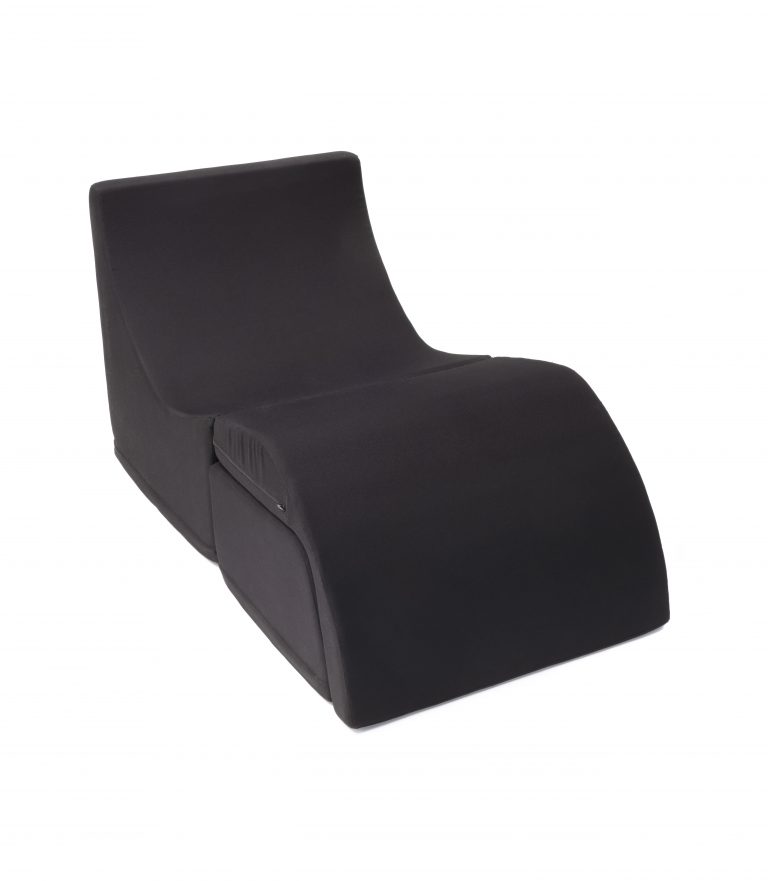
Q-Chaise, Canadian Museum of History 2018.308.155
Quality Over Quantity
Rashid’s appreciation for minimalism, and his interest in developing products with mass appeal, can also be traced to his childhood. Although the Rashid family wasn’t wealthy, the objects in their home were carefully chosen and nice. The round, minimalist Braun alarm clock by Rashid’s bedside, and a futuristic stereo with globular speakers, instilled an appreciation for smooth, soft things that were pleasing to the touch and added beauty to the sometimes mundane aspects of daily life. Although he has frequently used plastic to accomplish his aesthetic and functional goals, Rashid has recently turned to recycled and environmentally friendly substitutes.
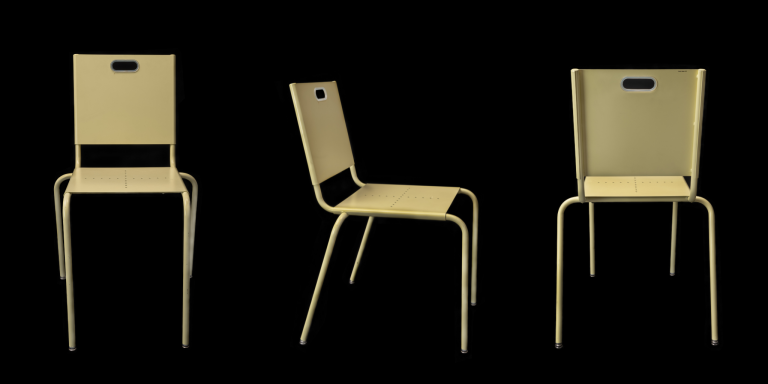
Side Chair, Canadian Museum of History, 2018.308.52
As recounted in the Artifactuality podcast, the idea of democratic design represented by the alarm clock and stereo from his youth fuelled Rashid’s drive to have his designs produced by big companies such as Gillette, La-Z-Boy and Coca-Cola. In the pre-internet early 1990s, Rashid spent hours at the New York Public Library, looking up the phone numbers of companies he wanted to work with, then cold-calling them. It was through this rather bold tactic that he met Paul Rowan and Les Mandelbaum of Umbra.
They gave him a brief for a wastepaper basket.
The rest, as they say, is history.
Design is for Everyday Life
In a world where the word “design” can have connotations of elite culture, Rashid is proud to create objects that are available and enjoyable to as many people as possible. Ultimately, he believes that well-designed, affordable and functional products can make the world a better place.
“I remember being so proud, walking to Bed Bath & Beyond and seeing the window of the garbage cans. Like ‘Woooow,’ I felt like I finally did something, you know?” – Karim Rashid
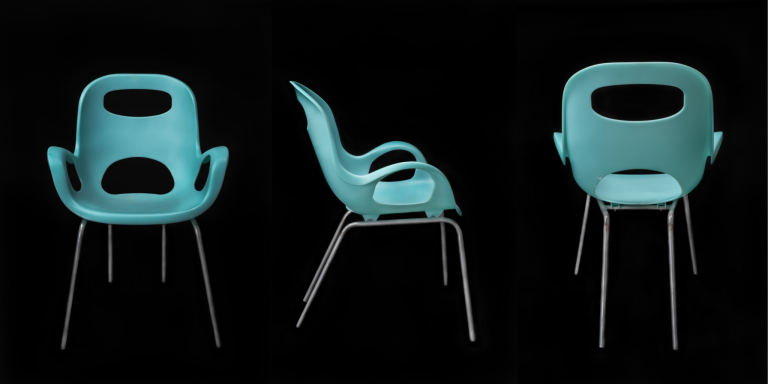
Armchair, Canadian Museum of History, 2018.308.65
Because they offer a glimpse into everyday life, functional objects also provide a unique perspective on the past. They demonstrate that, in contemporary Canada, beautiful household design has become more affordable, and consumers can express themselves through even the most mundane objects.
This innovation can be tracked across time in Rashid’s work, from Expo 67 to a Braun alarm clock, from the Garbino to the Oh Chair. For the museum of the future, Rashid’s story and his designs remind us that the objects we use have a history. Through daily use, they become part of the backdrop to our lives. As art pieces, they open up the possibility for wonder and beauty to enter these same lives.
“Design is for everyday life. And design is these objects that are around us. If you’re going to put all this work and engineering, and all the tooling costs and all the people involved — and two years to develop — why not be poetic, more beautiful?” – Karim Rashid
Further Reading
- Pop profile — Karim Rashid
- Objects from Karim Rashid in the Museum collection
Download and subscribe to Artifactuality wherever you get your podcasts — Apple Podcasts, Spotify and Google Podcasts— or listen on YouTube.
Learn more about other episodes of Artifactuality:
- The Meaning of Mitsou – A conversation about stardom, style and reinvention
- Breaking Ice – The story of the Coloured Hockey League of the Maritimes
- We Have Always Been Here – Conversations with Blackfoot Elders about archaeology, time and territory
- Hearts of Freedom – A new perspective on Southeast Asia’s refugee crisis

Daniel Neill
Daniel Neill is the Researcher for Sport and Leisure at the Canadian Museum of History. He is also a musician and PhD Candidate in Ethnomusicology at Memorial University of Newfoundland.